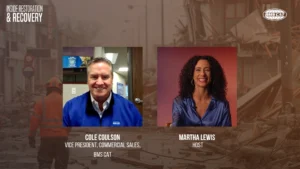Preventing Mold in the Workplace
Sam Reed authored this article. Reed is a content writer at PTAC4Less, an online retailer selling packaged terminal air conditioner units (PTAC units) since 2003.
Mold is a naturally occurring organism that can be found anywhere, but it can cause a handful of problems if it is present in the workplace.
Many people are allergic to mold, and it deteriorates things like sheetrock, wallpaper, insulation, drywall, carpet and upholstery. Mold grows very quickly and breaks down or consumes whatever it sticks to.
Mold grows wherever there is moisture and can cause health issues in the workplace.
The National Institute for Occupational Safety and Health (NIOSH) says that office buildings, schools, and other nonindustrial buildings may develop moisture and dampness problems from roof and window leaks, high indoor humidity, and flooding events, among other things.
Mold in the Workplace Can be Harmful to Employees
Exposure to mold spore contaminants can cause respiratory problems, allergies, asthma and even immunological reactions, according to the World Health Organization. The most common responses are upper and lower respiratory issues, but they can also include breathing difficulties, skin rashes, headaches, cough, wheezing and asthma. Some molds can cause deadly reactions in people.
Long-term exposure can cause chronic fatigue, cold- and flu-like symptoms, shortness of breath and weakness.
Older buildings can hide mold easily. It can grow behind paneling or underneath carpet. If you see signs of moisture problems, like rusty pipes or warped walls, and employees in your office building are showing signs of mold allergies, that’s a pretty good indicator that you have a problem.
Mold smells musty, so try to track down the source of the odor.
How do I decrease mold in my workplace?
You cannot always completely avoid indoor mold. However, you can take precautions. Prevention is key.
The Center for Disease Control (CDC) recommends the following steps to prevent mold:
- Keep humidity levels as low as you can — no higher than 50 percent — all day long. An air conditioner or dehumidifier will help you keep the level low, according to the CDC.
- Use exhaust fans in the kitchen and bathrooms.
- Consider repainting the walls with painted treated with mold inhibitors.
- Clean bathrooms with products that include mold inhibitors.
- Do not carpet bathrooms or kitchens.
- Always remove and replace flooded carpets.
If you have a leak, or if your business was damaged by flooding, repair the leak source and dry everything out as well as possible. Again, do not keep wet carpets. Keeping a dehumidifier running in areas that are chronically damp, like basements, will help.
If mold is a problem in your bathroom, you may need to increase the ventilation. And that is not just limited to bathrooms — starting in the 1960s, builders started building homes and commercial buildings that were more tightly sealed. While that is great for power bills, it prevents moisture from easily escaping.
Small areas of mold growth can be removed from hard surfaces with soap and water or a bleach solution (no more than one cup of household laundry bleach in one gallon of water).
Do not ever mix bleach-based cleaning products with ammonia-based products. That creates a toxic mix that is dangerous if inhaled. Check the ingredients listed on all household cleaners.
Any mold growth more than 10 feet should be contracted out to a mold remediation company. There is a risk of spreading the mold when you clear out materials like wall board, paneling or ceiling tiles. There is a possibility you will spread more mold spores when you attempt to remove it, so the area needs to be sealed off while decontamination is taking place.
What to do if mold is suspected in your workplace
NIOSH recommends the following steps if mold is suspected:
- Do not ignore reports of health concerns from employees.
- Inspect building areas such as roofs, ceilings, walls, basements, crawl spaces, and slab construction for evidence of dampness regularly.
- Conduct regularly scheduled inspections of heating, ventilating, and air-conditioning (HVAC) systems and correct issues quickly.
- Inform your employees that respiratory problems from exposure in damp buildings can occur.
- Create a system for response to building dampness and musty or moldy odors, leaks, and flooding incidents. Also have a system to combat building-related respiratory symptoms or disease.
- Encourage employees who have reported respiratory issues while working in the building to see a healthcare provider.
- If there is a mold problem, relocate your employees to another space until it is taken care of.
Final word
If mold is growing on things like produce or food left in a shared refrigerator, throw those items away. However, if mold is growing on the walls, floors or ceilings of your office space or business, that will have to be taken care of for the health of your employees and the maintenance of your building.
Remember that mold grows quickly. Finding the source of moisture and treating it will prevent additional mold from growing.
Eliminating moisture sources is the best thing you can do to prevent mold overgrowth in your home.









